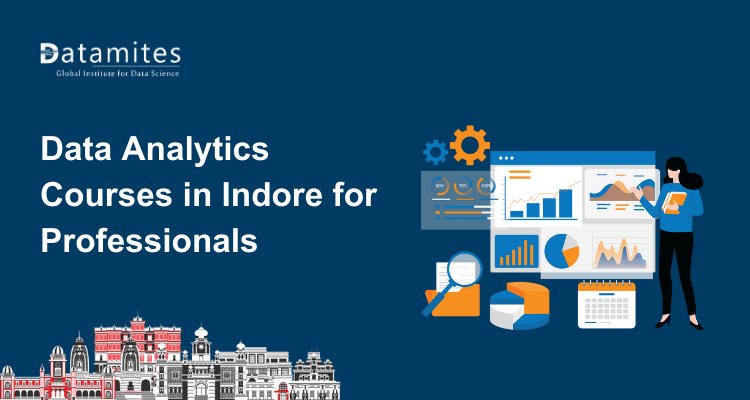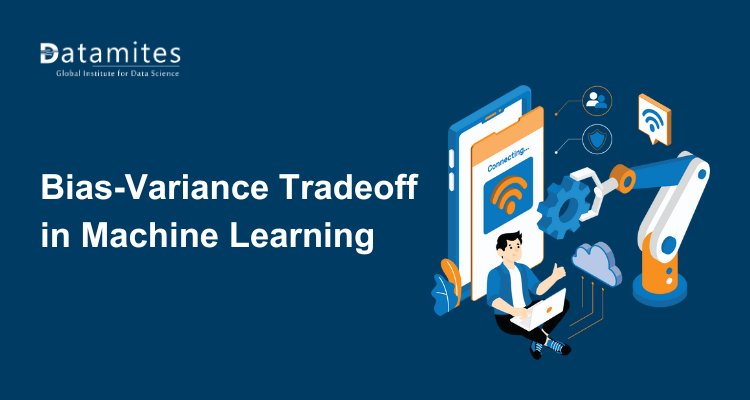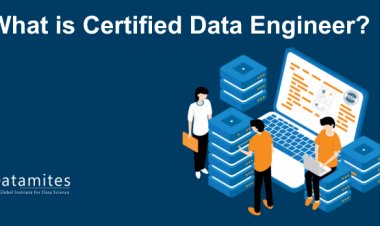How Do Big Data and AI Work Together?
Big Data and AI form a powerful synergy that drives innovation across industries. Big Data provides the vast and diverse datasets needed to train AI models, while AI analyzes this data to uncover patterns, make predictions, and automate decisions.
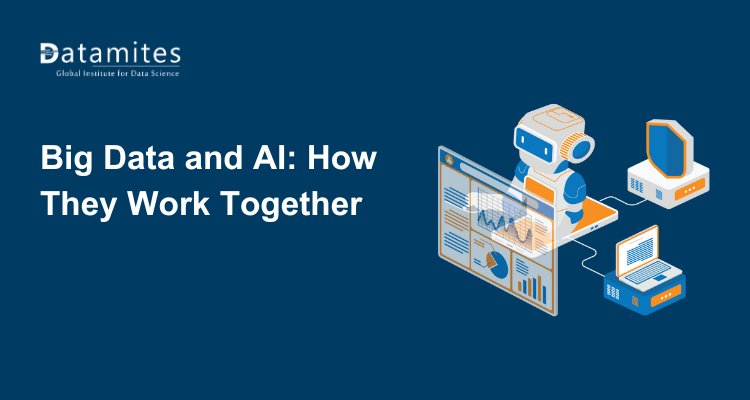
This surge of information, often referred to as Big Data, demands smart systems to analyze and derive meaningful insights from it. That’s where Artificial Intelligence (AI) comes in. Together, Big Data and AI create a dynamic partnership that is driving innovation across industries, enhancing customer experiences, and revolutionizing how decisions are made. In this article, we’ll delve into how these two technologies work hand in hand, explore their practical applications, and look ahead to what the future holds for this transformative combination.
What is Big Data?
Big Data refers to datasets so large, fast, or complex that traditional data processing tools can’t manage them efficiently. These datasets are often characterized by the 5 Vs:
- Volume – Massive amounts of data
- Velocity – Speed at which data is generated
- Variety – Different types of data (structured, unstructured, semi-structured)
- Veracity – Accuracy and trustworthiness of data
- Value – Useful insights derived from the data
Sources of Big Data include social media platforms, IoT devices, transaction records, sensor data, and mobile applications. However, collecting data is only the first step. True value lies in making sense of it, and that’s where AI plays a crucial role.
Refer these below articles:
- What is an AI Agent? Guide to Intelligent Agents in AI
- Hyperparameter Tuning: How to Improve Your Machine Learning Model
- What Is a Neural Network? Understanding Deep Learning Basics
What is Artificial Intelligence?
Artificial Intelligence refers to the simulation of human intelligence in machines that are capable of learning, reasoning, and problem-solving. AI encompasses several subfields, including:
- Machine Learning (ML) – Algorithms that improve through experience
- Deep Learning – Neural networks that mimic human brain processes
- Natural Language Processing (NLP) – Understanding and processing human language
AI thrives on Big Data the more it processes, the smarter and more accurate it gets. This synergy powers intelligent automation, predictive analytics, and smarter decisions. The global AI market, valued at $279.2 billion in 2024, is expected to reach $1.81 trillion by 2030, growing at a CAGR of 35.9%. (Grand View Research)
How Big Data and Artificial Intelligence Complement Each Other
Big Data and AI are interdependent technologies. Here’s how they work together:
1. Data Fuels AI Algorithms
AI models, especially in machine learning, require large and diverse datasets to identify patterns and learn. Big Data provides the quantity and variety needed to improve the accuracy and reliability of these models.
2. AI Makes Big Data Actionable
While Big Data delivers information, it’s AI that transforms this raw data into actionable insights. AI systems sift through massive datasets, detect correlations, and predict future trends that humans may overlook.
3. Real-Time Analytics
The integration of AI allows real-time processing of Big Data. For instance, streaming data from IoT devices can be analyzed on the fly to trigger alerts or automate responses in smart homes, factories, or cities.
4. Data Cleaning and Preparation
One of the most time-consuming tasks in data science is cleaning and preparing data. AI automates this process, making Big Data more manageable and analytics-ready.
5. Enhanced Decision-Making
With Big Data providing the depth of information and AI offering cognitive abilities, businesses can make smarter, faster decisions that are rooted in data-driven evidence.
Examples of Artificial Intelligence and big data
Here are some practical and impactful examples of how AI and Big Data work together across various industries:
1. Healthcare
Example: IBM Watson Health
- Uses Big Data from patient records, medical literature, and clinical trials.
- AI leverages this data to help doctors diagnose diseases such as cancer and tailor personalized treatment plans. Currently, 60% of healthcare organizations have adopted AI technologies in their operations.
2. Retail & E-commerce
Example: Amazon’s Recommendation Engine
- Collects massive data on user behavior, search patterns, and purchase history.
- AI algorithms predict what products a user might be interested in, boosting sales and customer satisfaction.
3. Finance
Example: AI-powered Fraud Detection Systems (e.g., Visa, Mastercard)
- Monitor thousands of transactions per second.
- AI detects unusual patterns or anomalies in real time, flagging potentially fraudulent activity.
4. Transportation
Example: Google Maps & Waze Traffic Prediction
- Analyze Big Data from GPS, sensors, and user reports.
- AI predicts traffic congestion, suggests optimal routes, and estimates arrival times.
5. Smart Cities
Example: Barcelona’s Smart Lighting System
- Uses sensor data on pedestrian and vehicle movement.
- AI adjusts street lighting dynamically, saving energy and enhancing public safety.
Read these below articles:
Benefits of Combining Big Data and Artificial Intelligence
Combining Big Data and AI unlocks powerful capabilities that drive smarter, faster, and more informed decision-making. This integration enhances efficiency, innovation, and competitiveness across industries.
- Faster Decision-Making: Automates data analysis and reduces the time to actionable insight.
- Enhanced Accuracy: More data improves AI prediction capabilities.
- Scalability: AI systems scale easily with growing data volumes.
- Cost Efficiency: Automating tasks with AI reduces manual labor and errors.
- Real-Time Insights: AI processes Big Data streams instantly for immediate response.
This powerful combination drives smarter operations, enhances customer service, and boosts business agility. As a result, 37% of business leaders are prioritizing employee upskilling over the next two to three years to stay competitive in an AI-driven landscape.
Future Trends in Big Data and Artificial Intelligence
The collaboration between Big Data and AI is only getting stronger. Here are key future trends to watch:
- Edge AI: Real-time processing of data directly on devices, reducing latency.
- Explainable AI: Transparent AI models that explain decisions, critical for trust and accountability.
- AI-Driven Data Governance: Automating data quality, lineage, and compliance tracking.
- Sustainable AI: Leveraging AI and data to drive climate and energy efficiency initiatives.
- No-Code AI Platforms: Enabling non-technical users to build AI applications using large datasets.
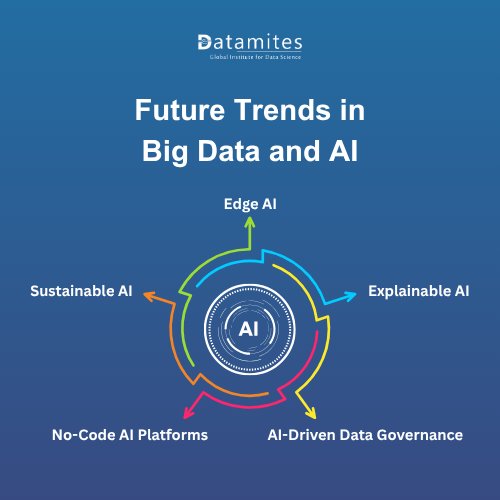
Big Data and AI have moved beyond being buzzwords; they now form the foundation of digital transformation. By working together, they enable businesses to accelerate innovation, enhance customer experiences, and make data-driven decisions. According to Statista, the market is projected to grow at a CAGR of 26.95% from 2025 to 2031, reaching a value of USD 309.70 billion by 2031.
The demand for Artificial Intelligence courses in Hyderabad is rapidly growing, opening up exciting opportunities for aspiring developers worldwide. Selecting the right programming language is a vital foundation for creating impactful AI applications. Whether you're starting out or aiming to deepen your expertise, aligning your learning path with the right language can greatly enhance your success in the field.
DataMites is a leading training institute offering expert-led courses in Data Science, AI, Machine Learning, and Python. Accredited by IABAC and NASSCOM FutureSkills, it has a strong presence in major Indian cities, including its Artificial Intelligence Institute in Pune, Bangalore, Chennai, Hyderabad, Ahmedabad, Coimbatore, and Mumbai. The programs combine theory with practical training, featuring projects, internships, and career support like resume building and Placement Assistance.

